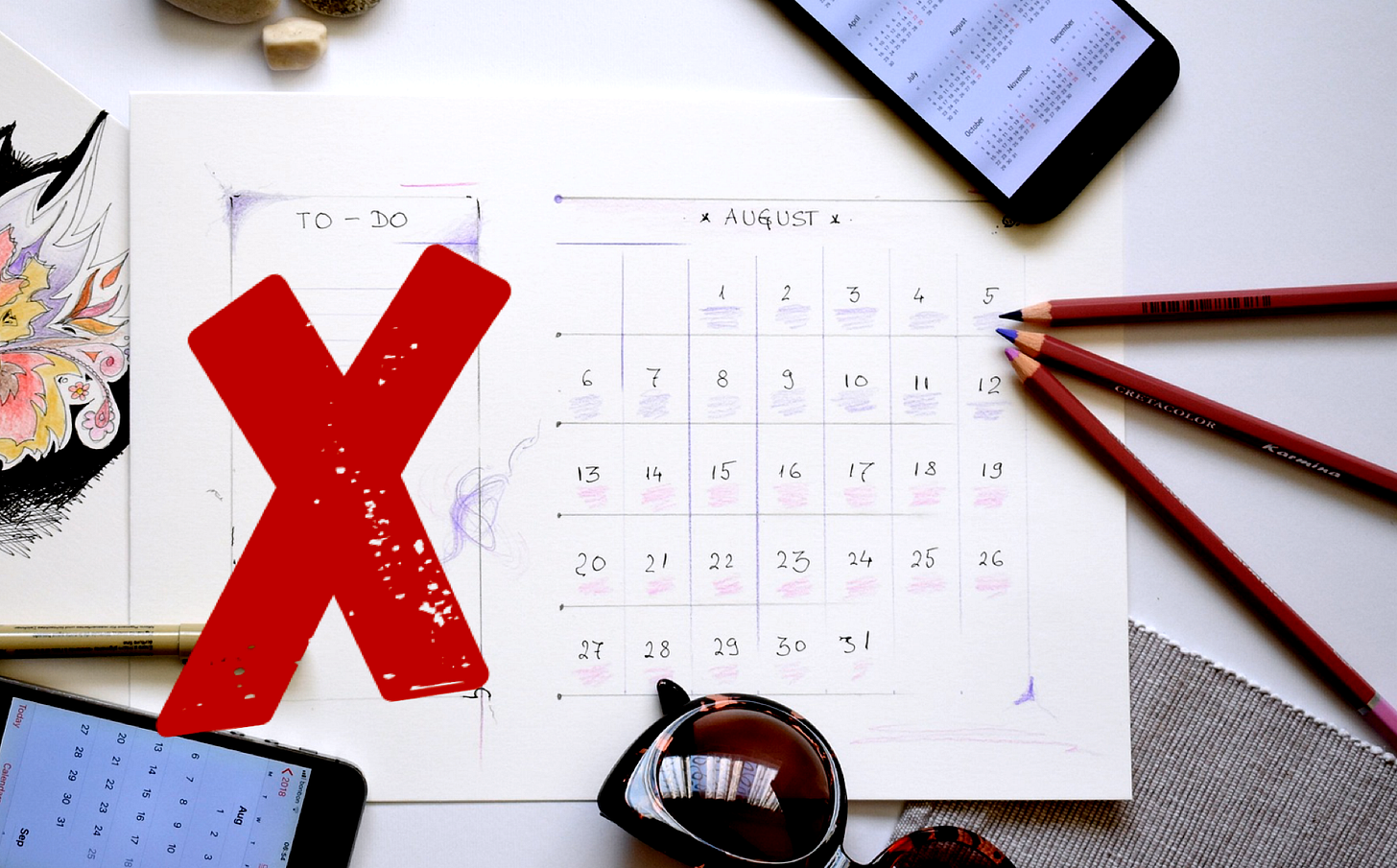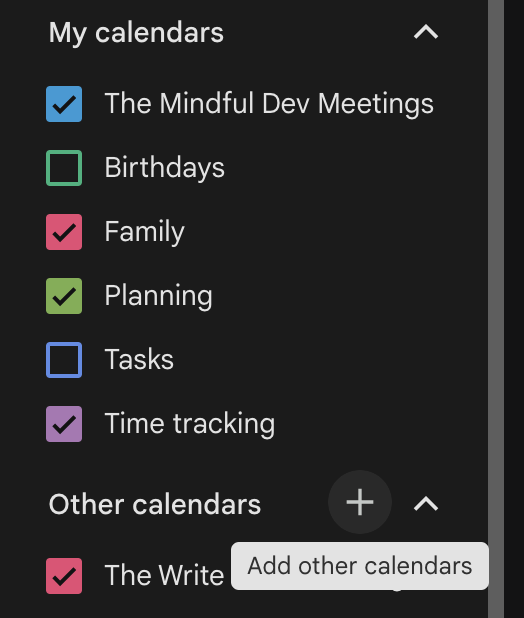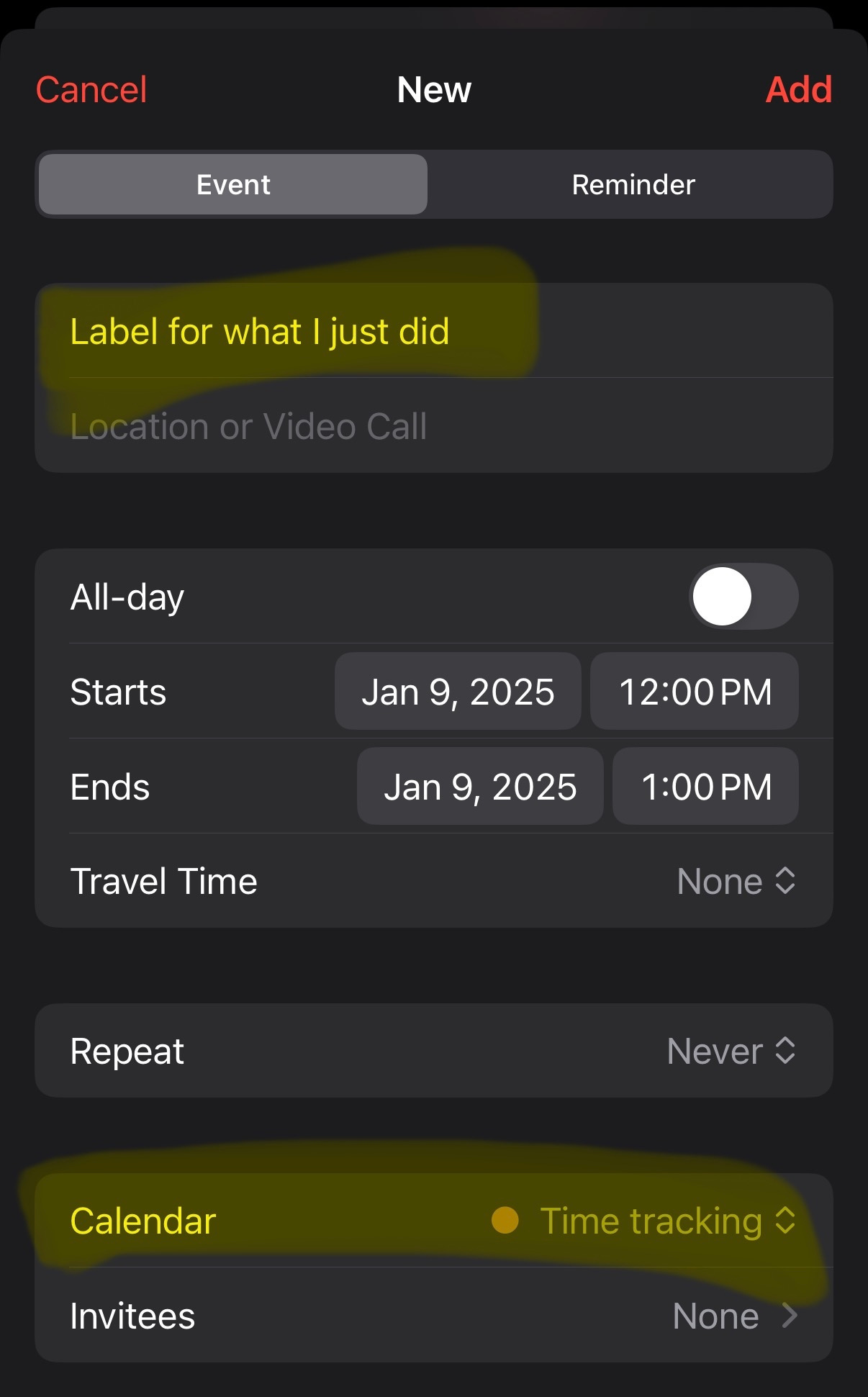Live From the Calendar, Ditch the Todo List
Get real about where your time goes and stop the overwhelm
You tell yourself you’ll get it all done today.
The list looked manageable until… The hours slipped away. Urgent tasks piled on. And distractions snuck in.
By evening, you’re staring at the same unfinished list, feeling frustrated, exhausted, and somehow… behind.
I know that feeling all too well. I spent years overcommitting, convinced I could squeeze more into a day than reality allowed. That left me overwhelmed, burned out, and constantly battling procrastination.
Now, as a parent of four and a business owner, I’ve had to find a better way. Not just to get things done — but to stay sane while doing them. Your version of busy might look different — juggling a 9-5 while building something on the side — but the challenge is the same: how to use the time we have in the best way possible.
After all, time in a day isn’t limitless.
A calendar reflects this reality since it has a fixed capacity. To-do lists, on the other hand, invite time blindness and the illusion that we can do loads of tasks. That illusion leads to overcommitment, which breeds frustration, which fuels procrastination, trapping you in a vicious cycle of always feeling behind.
Always feeling like you’re failing.
Unless… You stop letting to-do lists run your life and start living from your calendar instead. Here’s why that change was a game-changer for me — and how it can be for you, too.
Using the Calendar Is the Better Approach
Using a calendar forces you to treat time like the finite resource it is. Instead of reacting to an ever-growing list of tasks, you could proactively design your days with intention by scheduling your tasks in a calendar.
This leads to better productivity, reduced stress, and a greater sense of control over your time.
1. Prevents Overcommitment
To-do lists are infinite, while calendars have a set capacity.
Scheduling tasks forces you to be realistic about what fits in your day.
Helps avoid burnout by setting clear boundaries on where the time goes.
2. Reduces Decision Fatigue
To-do lists require constant prioritization and reevaluation.
A calendar eliminates guesswork — just follow your schedule.
Saves mental energy for deep work instead of planning on the fly.
3. Creates Accountability & Structure
You’re less likely to procrastinate when a task has a designated time slot.
Encourages better time discipline and intentionality.
Blocking time for tasks increases follow-through, especially if you have reminders set on.
4. Improves Time Awareness & Focus
To-do lists make time feel abstract, while calendars show exactly where your hours go.
Helps you see patterns in how long things actually take, including avoiding the trap of endlessly chasing unfinished tasks.
Encourages batching tasks and minimizing distractions.
Here’s How You Can Get Started
If you want to ambitiously go all in and ditch to-do lists overnight, don’t.
I don’t want you to fail.
Start slow. Start with tracking where your time actually goes. Do it for a week — or even better, a month — and get a reality check on what’s actually possible in this season of your life.
It’s an eye-opener.
How to Track Your Time (Without Overwhelm)
If you’ve never done this before, don’t worry — this method is simple and takes just a few minutes to set up.
Create a Dedicated Calendar – I have a separate “Time tracking” calendar that I created in my Google Calendar, so it doesn’t clutter my main view. It’s super easy to add.
Sync Your Calendar – If you read emails on your phone, you likely have this set up already in your Accounts (or Calendar Accounts).
Use Your Calendar – Open your calendar app (I use my iPhone’s native calendar synced with my Google Account) and hit the plus button to add a new event.
Label It – Write a quick description of what you did in that block of time. And that’s it.
Review Once Every Week – Go back and analyze where your time actually went.
What Tracking Your Time Can Teach You
Once you start tracking, you’ll gain insights unique to your own routines.
Maybe you’ll realize you’re overcommitting.
Maybe you’ll find that certain tasks take up much more of your time than you thought.
Or maybe, like me, you’ll finally understand why you can never finish that DIY-100-hour project in just one weekend.
Either way, this experiment is worth trying — even if just for a week.
When I tracked for a month, here’s what I noticed:
I spend most of my time on things and people I genuinely care about
I’ve been setting unfair expectations for myself
Batching tasks makes life so much easier
I need to tackle mentally taxing tasks somewhere between 10 AM and 1 PM, and when I don’t… procrastination wins
Clear communication with my husband about kid duties was a game-changer — I’m the morning mama, he’s the evening-duty dad, and that aligns with our circadian rhythms.
The Big Takeaway: Calendars Make It Possible To Make Your Time Count
Seeing my numbers was freeing. It gave me clarity and permission to set realistic goals for this busy but beautiful season of life. And because I don’t have much time available, this perspective allowed me to optimize the time I do have.
With to-do lists, I’d still be stuck in the frustration-procrastination cycle of overcommitting myself, blind to the fact that we only get so many hours in a day.
So, here’s my challenge to you: Track your time for a week. No judgment, just data. Then ask yourself — are you spending your time on what truly matters? And if not, what small shifts could you make to change that?
Because time isn’t just something to just manage. It’s something to invest — in what you care about, in what moves you forward, in building the kind of life you actually want.
And once you’ve tried this approach, let me know in the comments below!
I send this email weekly. If you would also like to receive it, join the 900+ other smart people who absolutely love it today.
👉 If you enjoy reading this post, feel free to share it with friends! Or feel free to click the ❤️ button on this post so more people can discover it on Substack 🙏




